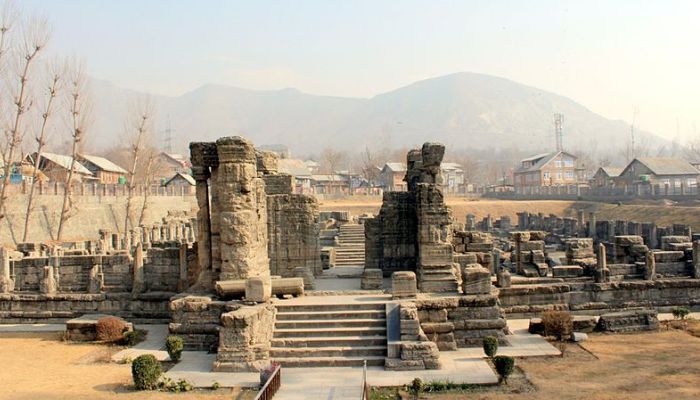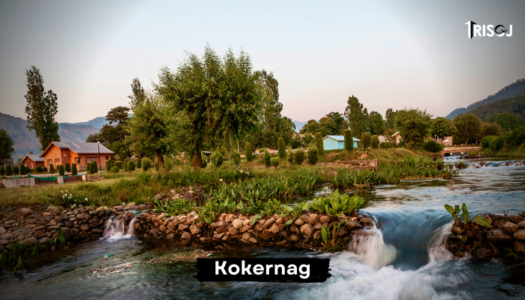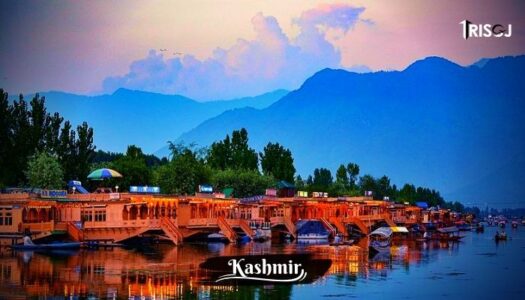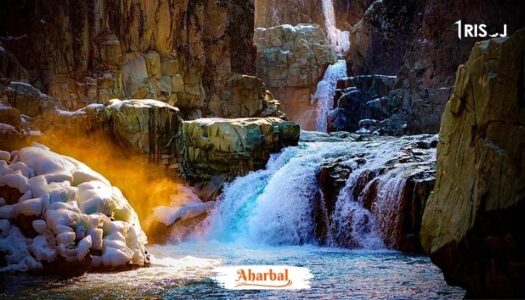Jammu and Kashmir is the sixth largest state of India and is located at the very top of our national map. Many people consider Jammu and Kashmir as the crown of the nation and give it its due place as the most beautiful Himalayan state possible. The tourism of Jammu and Kashmir has expanded slowly, but today there are so many spots for enjoyment and sightseeing in Jammu and Kashmir that it is almost impossible to explore all of that in one single trip.
Explore Tourist Destinations Like Never Before at Jammu and Kashmir
About Jammu And Kashmir
Geographically, Jammu and Kashmir can be thought of as being divided into three distinct regions – Jammu, Kashmir and Ladakh. Ladakh is the most unknown and mysterious of all three, being barely a consideration by the authorities in the early decades of the 20th century. Recently however as International tourists and organisations have recognised the natural and cultural beauty of Ladakh, the Indian government has started a lot of attention to it as well. Jammu is known as the winter capital of Jammu and Kashmir and one of the most visited regions of the state and is characterized by steep mountains and holy rivers. It has many monuments and architectural masterpieces from the Dogra Empire still standing erect and majestic throughout the city. Jammu is not located at a great height and of which the natural vegetation of this region as well as the lifestyle of the people of Jammu is different from that of Northern Kashmir. As for Kashmir, many of the most popular Tourist Places in Kashmir are located in the alpine regions of the greater Himalayas – high altitude lakes, meadows, glaciers, pine and deodar forests, ponies, and open valleys as contrasting to the deep valleys of Jammu.
Culture of Jammu and Kashmir
The culture of Jammu and Kashmir is more diverse than most people believe. While there is a large Hindu and Christian population residing in many parts of Jammu and Kashmir, there are also famous and beautiful Hindu and Buddhist destinations that are still revered and worshipped all over the country. Some of these pilgrimage sites include Vaishno Devi temple, Chandi Mata Mandir, Bhaironath Mandir, Gauri Mandir and Kund, Vasuki Nag Mandir and Kund, Amarnath Temple, Shiv Khori etc. There are many ancient and important Tibetan Buddhist monasteries that dot the region of Ladakh, most of them pertaining to the Vajrayana, Tibetian sect of Buddhism are visited all over the year by devotees not only from India but also China, Japan, South Korea, Thailand, Singapore, Philippines, Indonesia and Vietnam.
History of Jammu and Kashmir
Jammu and Kashmir have been a site for knowledge, enlightenment and divine sittings for ancient Hindus since the Aryan Times. The region around Jammu was a part of the Indus Valley civilization and its references can be found in the holy texts of Ramayana and Mahabharata. Especially in Mahabharata, it has been seen that the Pandavas have repeatedly sought the presence of Lord Shiva and many ancient saints in the valleys and meadows of Southern Kashmir and the thick forests of Jammu. The ancient Shankaracharya temple near Srinagar is also at least a thousand years old – many remains of the Maurya and Gupta dynasty still stand tall in Jammu and Kashmir.
Just like Hinduism when Islam came into India it also found a great place in the culture of Jammu and Kashmir. The Afghans travelled to India through Jammu and Kashmir and so did the Mughals. Jahangir discovered some parts of the Anantnag district in Kashmir and made many royal Mughal Gardens in Srinagar, Kokernag and Verinag. It is said that Jahangir and Noor Jahan would often come to the cities and hidden hamlets of Kashmir to spend time together and explore the power of natural locations in lifting the spirits of human beings.
Later in time, Jammu and Kashmir started being ruled by the Sikhs who were defeated by the British in 1846. From that period onward The Hindu Dogra dynasty ruled the southern part of Jammu and Kashmir which led to many significant developments being made in the lives of the ordinary people. The influence of the Dogra Empire has been so strong that most Kashmiris still identify themselves as Dogra and speak the Dogri language.
Best time to visit Jammu and Kashmir?
Jammu and Kashmir weather conditions are almost always slightly chilly and crisp, even during summer. In winter snowfall is common in Sonmarg and Gulmarg. Even Srinagar receives heavy snowfall during the winter and is a common tourist destination during this time. The floral beauty of locations for sightseeing in Kashmir like Srinagar, Patnitop, Gulmarg, Sonmarg, Doodhpathri and Kokernag etc are unparalleled. The best time to visit Jammu and Kashmir is during the summer months of May and June.
How many days for Jammu and Kashmir?
After all, different Hill stations in Kashmir are endowed with different natural and heritage beauties. A different amount of time is required to completely explore each location. According to the golden rule, 6 to 7 days minimum is the best you can do for large tourist destinations. 5 days are the ideal time to spend in an Offbeat Destination in Kashmir and most Adventure Treks in Kashmir take up to 7 or 8 days ts
Famous Tourist Places To Visit in Jammu and Kashmir During Your Holiday
1. Srinagar

This is the capital city of Jammu and Kashmir, more specifically the summer capital. It is after seeing Srinagar that emperor Jahangir exclaimed “Kashmir is Paradise on Earth!” Srinagar has some of the most popular Places to visit in Jammu and Kashmir such as the Dal Lake, Wular Lake, Pari Mahal, Shankaracharya Temple etc. Most small and big tourist destinations and hill stations of Kashmir are accessible from Srinagar. Srinagar is an exciting place to explore houseboat living, luxury Kashmiri 7 to 9-course dining, local markets and clothing of Kashmir etc.
Entry fee: No Entry cost
Opening and closing timings: open 24 hours
Time taken to visit: 8 to 9 days
2. Jammu
This is historically the most important city in the union territory of Jammu and Kashmir. As we discussed at the very beginning of this blog, the reference to Jammu has been found in the text as old and legendary as Mahabharata itself. Today, the best architectural wonders of the Dogra Empire and some of the most mysterious Places to visit in Jammu are located in Jammu. Some of the most important festivals of Jammu and Kashmir like the Navratri, Bahu fort Mahakali Puja and Mela, Mata Vaishno Devi Puja and festival, Makar Sankranti etc are predominantly festivals in Kashmir.
Entry fee: No Entry cost
Opening and closing timings: open 24 hours
Time taken to visit: 8 to 9 days
3. Leh

The mysterious City of Leh is the gateway to all of Ladakh. All essential resources are found in this city which will last you through all emergencies when you travel into the deep deserts of this side of Jammu and Kashmir. The most important spot for sightseeing in Leh Ladhakh has to be the Leh Fort, a wonderful mix of Kashmiri, Tibetan and Afghani architectural styles. Thanks to the tourism demands, Leh has today become a modern city that has many exciting, luxurious experiences to offer to tourists who are looking for a refined introduction to the culture of Ladakh.
Entry fee: No Entry cost
Opening and closing timings: open 24 hours
Time taken to visit: 7 to 8 days
4. Gulmarg

This is known as the Switzerland of India, and no one can change our minds. This hill station is one of the few places in India which even after receiving such heavy snowfall remains open to tourists throughout the year. Due to this, Gulmarg has become the chosen tourist spot of Jammu and Kashmir if not all of India for snow sports like Skiing, ice polo, skating etc. Many other adventure activities like paragliding, Gondola riding etc are also available in Gulmarg. One of the most fascinating Places to visit in Gulmarg is the Drung waterfall located near Gulmarg.
Entry fee: No Entry cost
Opening and closing timings: open 24 hours
Time taken to visit: 7 to 8 days
5. Pahalgam

This has to be without a doubt one of the most beautiful and exciting Places to visit in Pahalgam that can be added during the Jammu and Kashmir Trip. It is dotted with open valleys and hidden meadows, not to mention the beautiful high-altitude freshwater lakes brimming with trout. Pahalgam is also the base camp for some of the best trekking journeys in Kashmir. Most tourists prefer to come to Pahalgam first before undertaking these challenging experiences. The base camp for Amarnath Yatra is also Pahalgam.
Entry fee: No Entry cost
Opening and closing timings: open 24 hours
Time taken to visit: 7 to 8 days
Best Things To Do Near Jammu and Kashmir
1. Explore Kashmiri and Tibetan cuisine
Kashmiri cuisine is one of the most delicious cuisines in India. Although many luxury dining experiences include Kashmiri cuisine all over the country, nowhere can you find as authentic an experience as in Kashmir itself (obviously!). The same goes with Tibetan cuisine – while we all have eaten momos, Thukpas, wantons etc very few have discovered the actual depth of creation when it comes to Tibetan food. It is time to begin that journey now and enjoy some of the best food you have ever eaten on your next trip!
Entry fee: no preliminary entry fee
Opening and closing timings: 8:00 a.m. to 9:00 p.m.
Time taken to visit: 1 hour
2. Enroll in at least one of the major Kashmir treks
Kashmir houses some of the best trekking journeys – this is because of the lengthy trails that can be conquered without much exertion, the beautiful meadows and values which come into view on one’s way to the trek and the clear night skies which are quite literally, add stars to the experience. Some of the best Trekking places in Kashmir are the Great Lakes of Kashmir Trek, Naranag Gangabal Trek and Tarsar Marsar Lakes Trek.
Entry fee: no entry fee
Opening and closing timings: open 24 hours
Time taken to visit: 7 to 8 days
3. Skiing
This is not a widespread activity in India because there are simply not enough destinations where individuals can learn or practice Skiing. But when it comes to Kashmir, one of its hill stations Gulmarg, serves as a perfect location where even professional sportsmen love Skiing – and many professionals do come to Gulmarg from all over the world for this very experience! For us Indians, Skiing is therefore an activity that is reserved as an adventurous Thing to do in Jammu and Kashmir.
Entry fee: 700 INR for Phase 1 and 900 INR for Phase 2
Opening and closing timings: 8:00 a.m. to 6:00 p.m.
Time taken to visit: 3 to 4 hours
4. Shikara and Houseboats
These rides are one of the most coveted Activities in Srinagar. Shikaras are beautifully decorated traditional boats that can be found around the area of Srinagar, Patnitop, Anantnag etc. A similar and yet more exciting activity is to stay in a houseboat for a few days! The traditional wooden houseboat has been remade for tourists and is today a part of a luxury experience where tourists get served authentic Kashmiri food and are introduced to authentic Kashmiri music and dance while spending a few days floating on the Dal Lake!
Entry fee: 3000 INR per night
Opening and closing timings: Open 24 hours
Time taken to visit: Minimum 2 days 1 night
How To Prepare for a Trip to Jammu and Kashmir
- Take warm clothes that are comfortable and yet sufficiently insulating.
- Don’t forget accessories like water-resistant clothing, water-resistant gloves, warm socks, trekking boots, woollen caps etc.
- Carry all identification documents and permits.
- Carry individually prescribed medication along with a first aid kit.
- Always carry cash since ATMs and net banking is not available in many offbeat regions of India.
- Carry comfort items for children and the elderly.
- Carry Bluetooth speakers/headphones, portable Wi-Fi, charger, Power Bank and protective case for mobile and other devices.
- Get a medical certificate from your practitioner before going anywhere that is at a high altitude or would lead to some stress to your respiratory or cardiovascular system.
- Carry some dry snacks in case you are going to a location where food is not readily available.
- Confirm all bookings before travelling.
- Pack daily hygiene essentials like toothbrush, toothpaste, shampoo and soap, hair tie, garment and shoe cleaner, makeup if any, perfume and deodorant etc.
- Get a printout or hard copy of any digital ticket or booking.
- Have a planned itinerary nearby. Also, plan mealtimes and available meal options beforehand.
Frequently Asked Questions?
A. 6 to 7 days is the minimum you can give to most major hill stations of Jammu and Kashmir. The ideal visit to impotent sites like Srinagar or Gulmarg demands 8 days on average.
A. The best time to visit Jammu and Kashmir is during the summer months of May and June. Therefore for families, the ideal time to visit would be around the summer vacation!
A. There are three ways to reach Mata Vaishno Devi Mandir. You can either travel on foot, hire a horse or pony or a helicopter.
Conclusion
There are endless Kashmir Travel Packages available at most travel agencies that cover different parts of Kashmir or Ladakh and offer planning for different needs – solo trips, pilgrimage, couple trips, honeymoon, family trips, group trips, birthday or anniversary vacations etc. Why it is not possible to explore the whole of Jammu and Kashmir in a single trip, an experienced travel agent can include maximum locations in a single journey!













